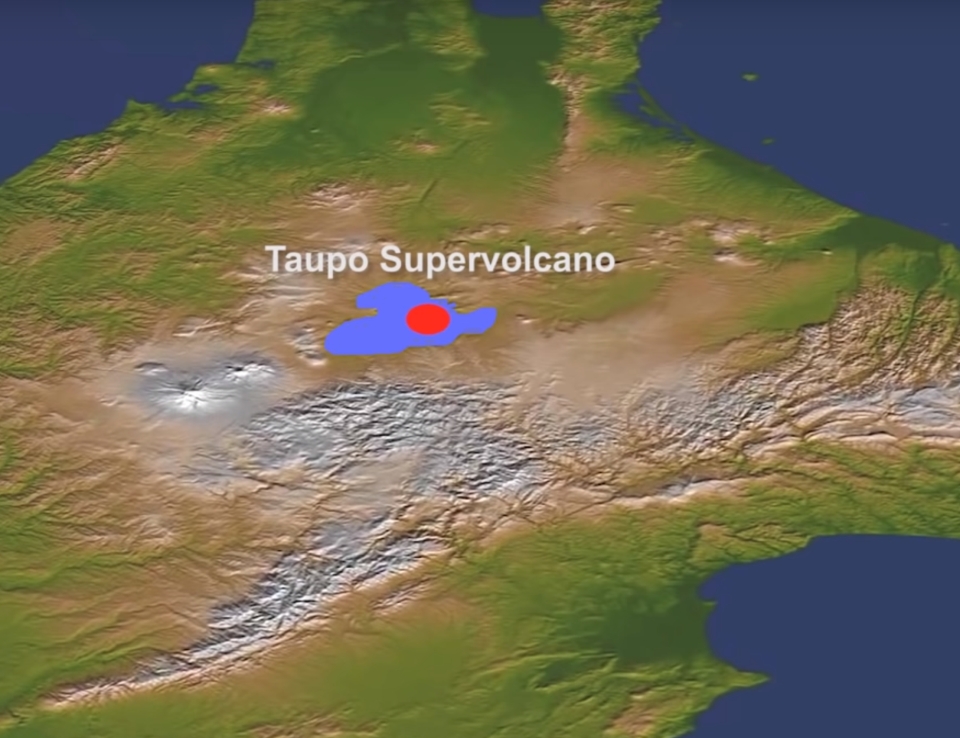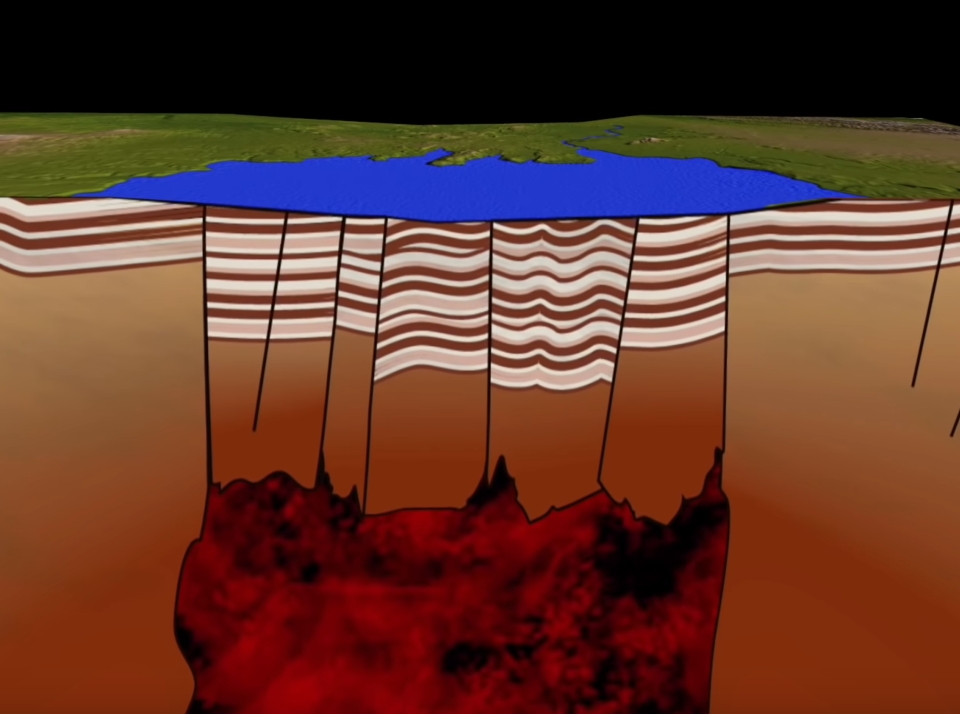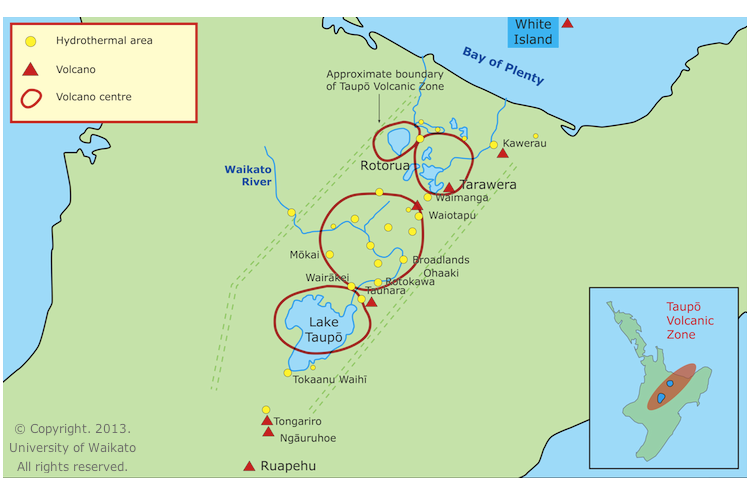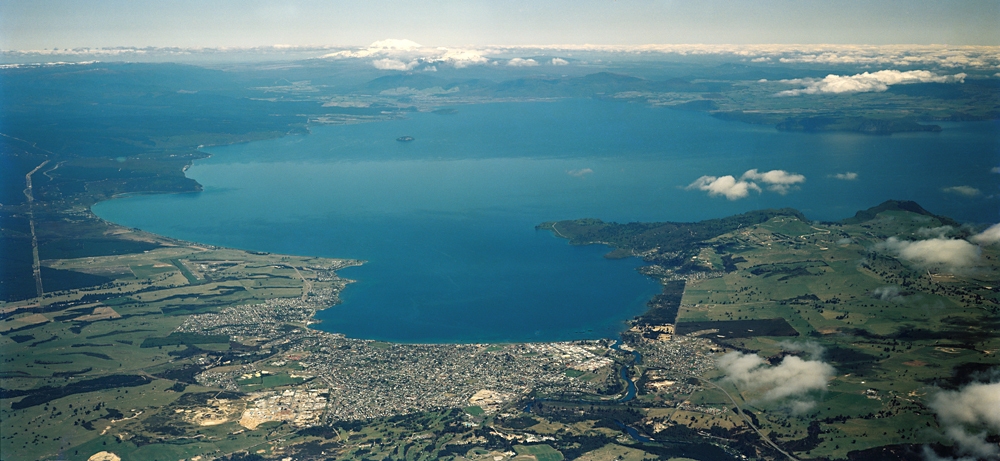The name Taupō comes from Taupō-nui-a–Tia, the ‘great cloak of Tia’. Tia discovered the lake.
During this field trip you will follow the journey of high preist Ngātoroirangi. Ngātoroirangi and his sisters Te Hoata and Te Pupu brought fire to New Zealand from their homeland, Hawaiki. During his travels Ngātoroirangi battled very cold weather. He called out to his sisters, who came to him from Hawaiki in the form of fire under the earth. They appeared above the ground at places between Whakaari, White Island and Tongariro to create geysers, hot pools and volcanoes.
You can find out more about Ngātoroirangi in this interactive.
Taupō is a ‘supervolcano’ and is one of the most active supervolcanoes in the world. Lake Taupō fills the collapsed crater or caldera created by a huge eruption. The caldera formed when the ground surface collapsed as the magma chamber below emptied.
Today the magma chamber is between 6 and 8 km below the lake. Taupō Volcano has much more violent eruptions than cone volcanoes. These eruptions do not happen very often. Taupō began erupting about 300,000 years ago. The Lake Taupō caldera was created by an eruption 27,000 years ago called the Oruanui Eruption.
Since then there have been at least 26 much smaller eruptions. The last eruption was 1800 years ago. These eruptions formed lava domes and spread pumice and ash over nearby areas.
Cause
The Taupō supervolcano system is the result of subduction. The Pacific Plate is sinking below the Australian Plate. The movement of plates stretches the Earth’s crust. This stretching has led to a thinning of the crust in the Taupō Volcanic Zone. This allows magma to rise close to the surface causing volcanic activity.
The last major Taupō eruption is the most violent eruption known in the world in the last 5000 years. All of New Zealand was covered in at least 1cm of ash. Areas near the lake were covered in more than 100 m of pyroclastic flow. The flow spread up to 90 km from the vent and flowed over all local features except Ruapehu.
Ready for a quiz? Try the "Taupō Supervolcano" activity.







